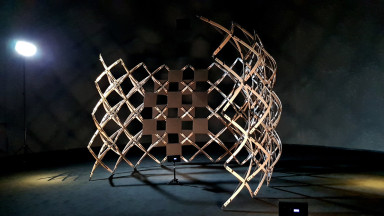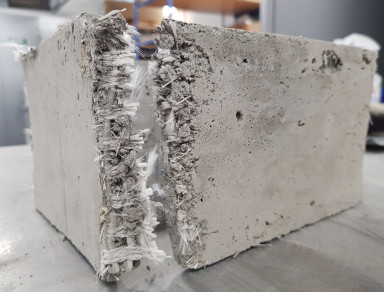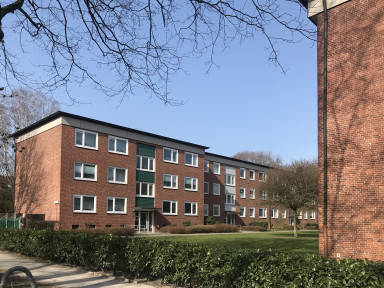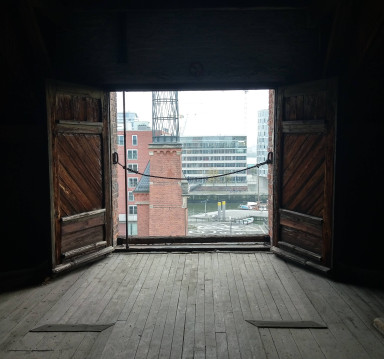Rethinking lightweight
On the role of resource-efficient and circular construction in structural design
The increasing scarcity of materials in the building industry is the result of many years of exploitation of limited resources. How can our design and construction methods encourage the circular use of materials and components to address this problem? Lightweight design principles as well as circular design offer solutions for a both efficient and effective use of materials. This dissertation project deals with these concepts on a theoretical and practical level and thereby explores the potentials of lightweight structures for circular construction – from the holistic design approach to its material interactions.
- structural design
- circular design
- lightweight structures
- sustainability
- resource efficiency
- resource effectiveness
- eco-design
- research pavilion
Context
The enormous consumption of resources in the building industry poses new challenges for architects and engineers. Lightweight structures are a logical choice for saving materials: Their efficient use of materials offers advantages from an ecological point of view. In addition, they can be used effectively in the context of urban redensification, as they only have a minor impact on existing buildings. As defined by Johannes Wiedemann, lightweight structures are a design philosophy of using as little material as possible for functional or economic reasons without sacrificing the load-bearing capacity of a structure.1 They incorporate the theories of optimal force paths to minimize the dead weight of structures which were developed and described by James Clerk Maxwell and Anthony Michell,2 among others. However, the paradigm shift from linear resource consumption to a circular economy also challenges the design of lightweight structures. In recent years, the development of composite materials with high material strengths has led to a focus on ever more efficient cross-sections and disregarded the need for recycling and reuse of building materials. In order to conserve the planet’s natural resources, there is an urgent need for action to preserve the stock of already extracted and processed materials and to use them continuously over and over again in closed material cycles.3 This approach, known as circular design, eliminates the need to extract new raw materials. At the same time, circular design changes the previous standard design approaches due to its dependence on available materials and building components, creating new challenges for architects and engineers.4 Thus, a shift from resource efficiency to an effective use of resources would be a pivotal moment for the rethinking of lightweight structures.
Aims
The lightweight design philosophy offers starting points for the development of sustainable and contemporary solutions for architectural applications. In structural engineering, lightweight structures have a strong reputation as a synonym for creativity. Due to the direct link between form and force, there is great potential in adapting material and element stiffnesses for form-finding lightweight structures. Lightweight structures can look back on a long history of continuous development and are a driving design element, especially for high technical performance.
The aim of the dissertation project is to explore the possibilities and limits of lightweight structures for circular construction in order to enable the transformation of load-bearing structures towards a circular economy. It seeks to determine how a sensible use of resources through efficient load-bearing behaviour can also be made effective. In addition to exploring the development of lightweight design principles and circular design principles on a theoretical level, the research project also includes a practical approach with an experimental setup in order to explore material interactions in practical application.
Research design
The doctoral project can be divided into three steps, which analyse the research object with varying degrees of acuity and thus enable a holistic examination.
The first step is an explorative study of the principles of circular design and lightweight structures. To this end, the historical development of the different definitions of lightweight design principles are first outlined. Subsequently, the principles of circular design are characterized. The comparison between the two design methods highlights and examines the potential of lightweight structures for sustainable development.
In a second step, on the basis of the initial explorative study, a material-appropriate design is constructed that follows both the principles of lightweight structures and the principles of circular design. For this purpose, the load-bearing capacities of the selected materials are first determined with the help of experimental tests. The designing process is supported by parametric design software. Researching the resulting pavilion structure explores the aesthetic and structural potentials of circular design in lightweight structures and verifies the applicability of the boundary conditions on a larger scale.
The third step includes a numerical simulation of the load-bearing behaviour of the lightweight pavilion. The mechanical properties of the designed structure are explored in more detail. For this purpose, individual basic load-bearing mechanisms are identified and transferred into a computational model. In addition, these load-bearing principles are further developed. The knowledge gained is then verified by building small-scale physical models.
Supervisor:




